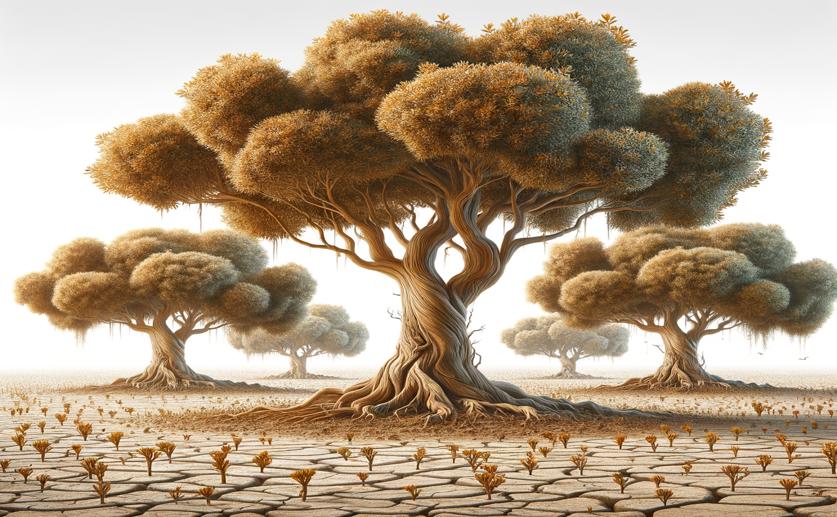
Genetic Factors and Limitations in Drought Resistance Traits in Marri Trees
Greg Howard
28th June, 2024

Image Source: Natural Science News, 2024
Key Findings
- Researchers from Western Sydney University studied the tree species Corymbia calophylla to understand its genetic adaptation to drought
- They identified 6.5 million genetic variants in 432 trees and linked these to traits related to drought resistance
- The study found that genetic variants in regulatory regions play a significant role in drought adaptation, influencing multiple traits
References
Main Study
1) Genomic determinants, architecture, and constraints in drought-related traits in Corymbia calophylla
Published 27th June, 2024
https://doi.org/10.1186/s12864-024-10531-8
Related Studies
2) A candidate gene association analysis identifies SNPs potentially involved in drought tolerance in European beech (Fagus sylvatica L.).
3) Identification of several small main-effect QTLs and a large number of epistatic QTLs for drought tolerance related traits in groundnut (Arachis hypogaea L.).
4) Climate change will affect global water availability through compounding changes in seasonal precipitation and evaporation.



 27th June, 2024 | Greg Howard
27th June, 2024 | Greg Howard